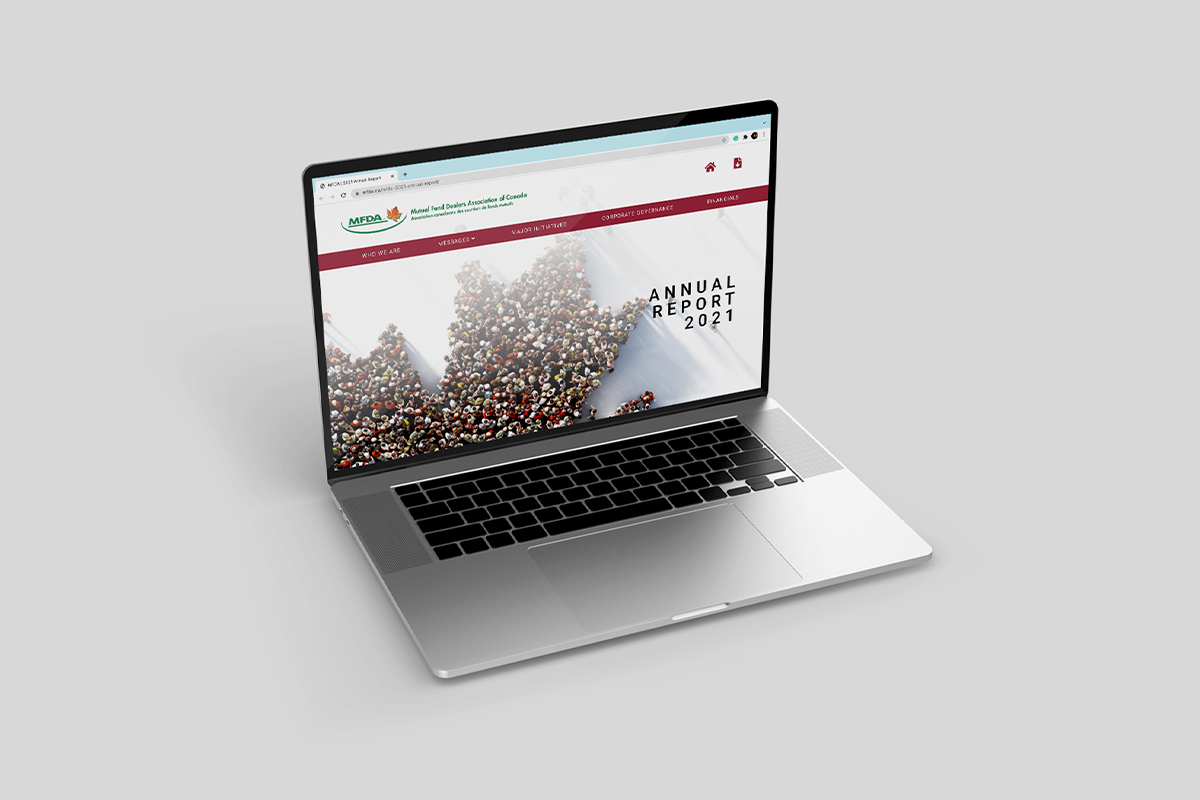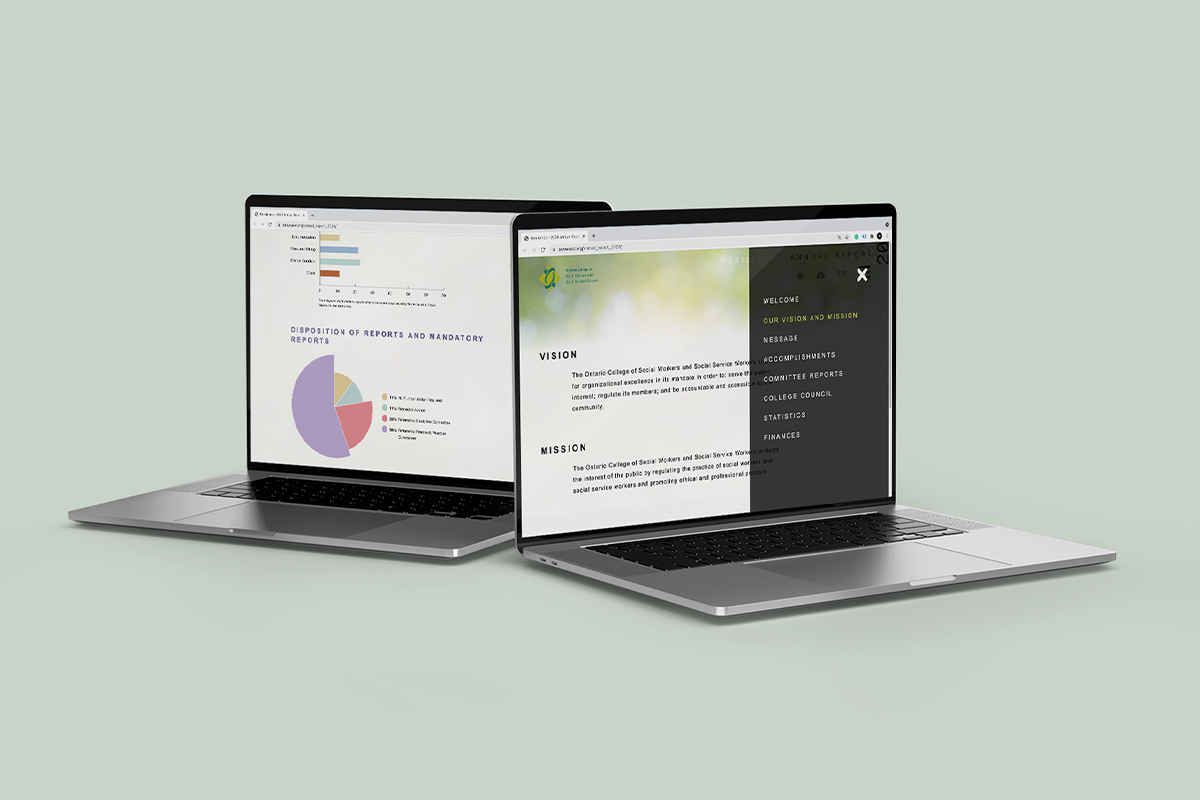
About 20 years ago C(GROUP developed one of the first annual reports for a Fortune 100 company (SunLife Financial) that was in a true digital format – developing a micro-site with website style navigation and animation, rather than just a PDF. Its success led them to doing the same for the likes of Scotiabank and other heavy-hitters and prompted coverage on C(GROUP in Canadian Business Magazine about the trend.
C(GROUP now chooses to work exclusively for non-profit organizations, but continues to develop numerous annual and impact reports each year. As one of the pioneer design firms in digital annual reporting, C(GROUP’s Principal Geordie Allen says “We could see way back then that this was the future, for a myriad of reasons, however it’s been a real blind spot for non-profit organizations – most still only produce a PDF and post it on their website”.

Annual and Impact Reports hold a meaningful place in a non-profit’s communications plan, so why has it taken almost two decades for the benefits of a web-based format to come on the sector’s radar? “I think it’s because it’s an obligatory annual project. It’s seen as a bit of a chore every year-end, rather than a real marketing opportunity – which of course it is” says Allen. “It’s still produced in the print paradigm, when it should really be designed, launched, promoted, socialized, measured and analyzed using today’s digital marketing best practices”.
If you are a web designer, developer or digital marketing expert the benefits are as clear as day. However, ownership of these projects within a non-profit rarely falls in the hands of these folks. No-ones suggesting it should, it’s just that the people that are executing it need to change the lens through which they view this type of project from print to web.

So what are the benefits? Well, there are many, but let’s look at the top three.
First, the holy grail of a higher Google search ranking. Google and other search engines index the pages of your non-profit’s website to build an understanding of what your organization does, and then match it to the over 99,000 internet searches done every second. They take the keywords someone’s entered in the search bar and apply their proprietary algorithm to rate the relevance of your website to the specific search. As it is complex and ever-evolving, no one really knows the complete formula used in search ranking, however, some of the factors that impact higher organic (unpaid) search results are the keywords you use, the frequency of those words, the newness of content, and relationship to social media.
PDF content is in a different class than web page content and depending on how the PDF is incorporated into the webpage – it may not be crawled at all. Since your annual or impact report communicates important information related directly to your mission, it’s very valuable content for the purpose of ranking higher in the areas that matter to you.

Second, is something Fortune 100 companies know the value of and spend millions of dollars on every year: good design. If you understand the importance of ensuring your non-profit’s primary website possesses a good user-interface and user-friendly navigation (all aspects of design), then why would you expect someone using a desktop, tablet or smartphone to easily access the content of a book format PDF? You would never serve up the content of your website as a book format PDF. If you simply don’t care about how (or if) your annual or impact report content gets digested, then stop reading here because you have a whole set of other problems. If you know that all, or mostly all, of the people accessing your annual report are viewing it digitally, then the format of that content should be designed for digital, not print.
Another benefit of good design is a word you need to know if you don’t already: responsive. Responsive design is a modern way of designing digital content. In a nutshell, no matter what you use to access a web page (desktop, tablet or smartphone), the various pieces of content, re-size and reposition themselves for optimal viewing based on your screen size. That’s a game-changer.

The third benefit is interactivity. A PDF is static, end of story. A web page, on the other hand, can have all kinds of functionality built in for an incredibly rich experience. A simple example is linking to related content within the organization’s primary website, and in doing so, moving users into an area of content that’s meaningful to them, and in turn, closer to your Most Wanted Response (MWR) for that audience.
Another example is animation or video. Do you have an important story to tell or a key piece of information to promote? With a web-based annual/impact report, you can embed very engaging interactive components such as video, animation or infographics. This renders your nonprofit’s annual/impact report as a visually dynamic piece of communication, promotes more interest and improves stickiness.

For many nonprofits, the annual/impact report is an underperforming communication vehicle and a huge, missed opportunity. By simply changing the way you look at the project and making the shift from print format PDF to web-based micro-site, you can reap many benefits. Not only can you bolster the relevance of your primary website, but you’ll also improve access to the good stuff you’ve done this year. Using design best practices and engaging interactive content, you can tell more of your story, to more people, with better results.

